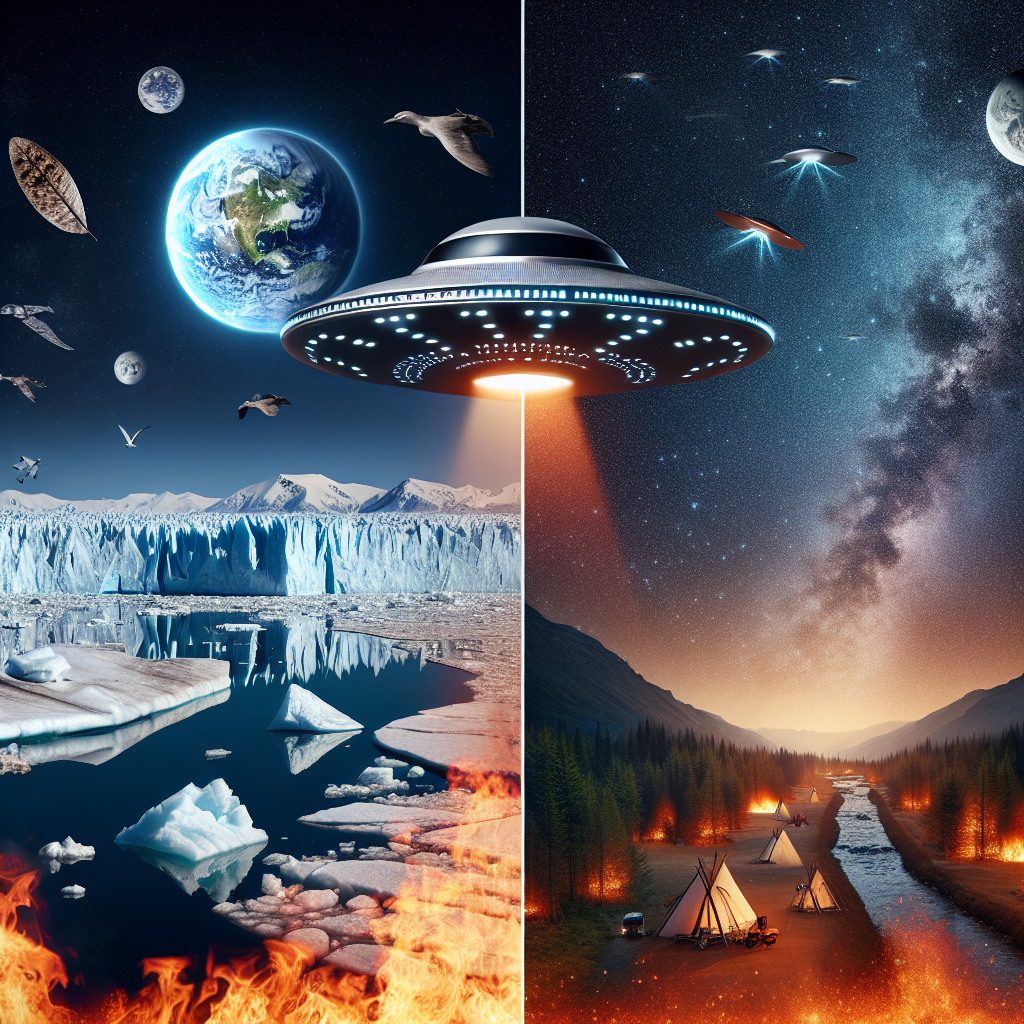The Persistent Fascination with UFOs
For decades, UFOs (Unidentified Flying Objects) have captivated the human imagination. Various reports of alien encounters and strange aerial phenomena have fueled discussions in both scientific circles and popular media. As climate change continues to dominate global discourse, questions arise: Is there a connection between UFO activity and climate change? While the idea may seem far-fetched, examining the data brings intriguing connections to light—albeit with a cautious approach toward unsophisticated conclusions.
Historical Context of UFO Sightings
To explore the potential link, it’s crucial to understand the evolution of reported UFO sightings. The modern UFO phenomenon began in the late 1940s, coinciding with the onset of the Cold War and an increasing public interest in space exploration. During this time, various reports associated UFOs with military activity, atmospheric phenomena, and later, environmental concerns.
Notably, the summer of 1947 saw the Roswell incident, a supposed crash of an alien spacecraft. This event catalyzed public interest and spawned numerous theories about extraterrestrial life and advanced technologies. Over the years, patterns in reports have emerged, influenced by societal fears, technological advancements, and, importantly, environmental shifts.
Climate Change: A Rising Concern
Climate change, driven by human activities, particularly fossil fuel consumption and deforestation, has led to significant alterations in the Earth’s climate systems. According to the Intergovernmental Panel on Climate Change (IPCC), rising temperatures, sea-level rise, and increased frequency of extreme weather events are some alarming consequences. As our planet grapples with these environmental issues, public concerns also extend to the future of Earth and humanity’s survival.
Curious Coincidence of UFO Sightings and Climate Events
Intriguingly, a correlation between increased UFO sightings and climate events has been suggested in several informal studies. For instance, some researchers have observed spikes in UFO sightings during periods of natural disasters—hurricanes, wildfires, and floods. One theory posits that these events may attract UFOs because of the disturbances they cause in the atmosphere and the ground.
Several notable UFO sightings have occurred during climate-related events. In 2005, during Hurricane Katrina, numerous reports of strange lights in the sky emerged from affected areas. Similarly, during California’s wildfires in 2020, glowing orbs were reported by several eyewitnesses. While anecdotal, these occurrences invite contemplation regarding whether increased UFO activity stems from heightened electromagnetic fields or atmospheric disturbances.
Human Anxiety and the UFO Phenomenon
Psychologically, the uncertainty brought on by climate change may contribute to the rise in UFO sightings. Humans often turn to the unknown when faced with fear and anxiety. Increased media coverage of climate issues can lead to a heightened state of worry about the future, triggering a search for explanations beyond the natural world. UFOs, often symbolizing “the other” or the unknown, may manifest from a psychological coping mechanism related to these anxieties.
A study published in the Journal of Psychological Science highlighted that people experiencing existential threats might be more likely to report encounters with “otherworldly” phenomena. This consideration suggests that amid rising temperatures and catastrophic weather events, the human psyche may inadvertently draw connections to UFO activity as a means of processing fears about our planet’s future.
Scientific Investigations and Skepticism
Despite the intriguing connections, scientific perspectives on the link between climate change and UFO activity remain skeptical. The scientific method emphasizes empirical evidence, and while the anecdotal evidence connects the two, robust research is lacking. The phenomenon of UFO sightings may instead derive from natural explanations such as atmospheric reflections, meteorological phenomena, or human-made objects misconstrued in times of crisis.
Moreover, the military has pursued research into aerospace phenomena, yet much of this work has remained classified. Programs like the Pentagon’s Advanced Aerospace Threat Identification Program (AATIP) had some focus on military encounters with unexplained aerial phenomena, but the outcomes have yet to link these incidents with climate factors comprehensively.
Climate Change Activism and Extraterrestrial Hypotheses
As climate change worsens, some eco-activists and theorists propose extraterrestrial life may be interested in Earth’s preservation. While lacking empirical support, these assertions have gained traction in subcultures and on social media platforms. Some argue that alien civilizations might intervene to mitigate humanity’s destructive tendencies toward the environment. This hypothesis, albeit speculative, casts a light on the intersection of ecological activism and UFO discourse.
Analyzing Data and Public Perception
Investigating this connection also requires looking at how data is recorded and reported. The National UFO Reporting Center (NUFORC) collects and analyzes UFO sighting reports. As data collection methods evolve, interpretations may shift, drawing links – however tenuous – to contemporary issues like climate change. Public perception of UFOs fluctuates, often influenced by films, books, and social media phenomena, promoting conspiracy theories and supernatural narratives surrounding environmental crises.
The Role of Media in Shaping Beliefs
Media plays a crucial role in shaping beliefs and narratives regarding UFOs and climate change. Documentaries, podcasts, and news articles exploring UFO sightings often emphasize the mysterious rather than the mundane explanations. Too often, this focus can distill urgent climate messages into sensationalism, straying from critical discussions regarding science and reason.
Senatorical hearings on UFO sightings have gained traction, linking governmental interest in aerial phenomena with increased public interest in climate change. Whether deliberate or coincidental, these trends affect public perception significantly, sometimes blending the lines between fact and fiction.
Future Research Directions
Researchers must tread thoughtfully in linking climate change and UFO activity. Bringing more rigor to this area, interdisciplinary studies incorporating psychology, sociology, and environmental science may yield comprehensive insights. Engaging with the cultural narratives surrounding both topics can reveal much about human perception, fears, and aspirations relating to the unknown.
Robust empirical research utilizing satellite imagery, climate data, and advanced technology could provide clarity to these connections, helping to dismiss myths or draw relationships based on credible evidence. As we grapple with an evolving climate and human existence, understanding the motivations and perceptions surrounding UFO activity may also illuminate uncharted territories of human anxiety.
The fusion of environmental science, popular culture, and psychology in research may bridge the gap laying between the tangible effects of climate change and the persistent enigma of UFO sightings. Ultimately, whether these connections are seen as fact or fiction, they represent another facet of the complex human desire for understanding and the search for explanations in an increasingly uncertain world.













Leave a Reply